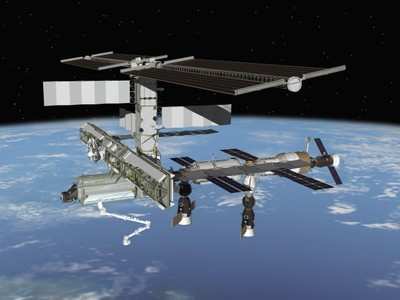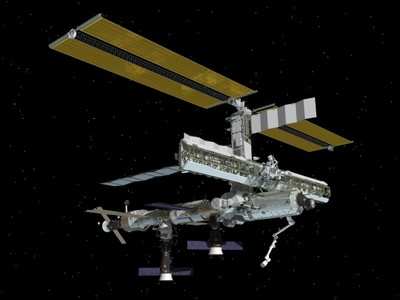At Station-Keeping
Last week, astronauts and engineers aboard the International Space Station (ISS) undertook a series of advanced microgravity experiments by which the whole of humankind may one day benefit.

Personnel of the space station’s Expedition 68—which comprises American astronauts Frank Rubio and Nicole Mann; NASA flight engineer Josh Cassada; Russian cosmonauts Sergey Prokopyev and Dmitri Petelin, flight engineer Anna Kikina; and the Japan Aerospace Exploration Agency's Koichi Wakata—investigated the effects of microgravity on human physiology, in particular, the sensory and neuromotor mechanics of reaching and grasping for objects in space.
Josh Cassada occupied himself observing and gauging the means by which ISS personnel regulate grip force. The NASA flight engineer’s work stands to shed light on the extent to which hand-eye coordination is affected by the sensory and kinesthetic realities of spaceflight.
Flight Engineer Koichi Wakata of Japan’s Aerospace Exploration Agency (JAXA) also took part in the space adaptation study, joining Cassada inside the ISS’s Columbus module where the two men took turns donning a virtual-reality (VR) headset and responding to synthetic stimuli. Observations of Cassada’s and Wakata’s VR sessions may inform earthbound researchers of the human brain’s adjustments to microgravity, and ultimately aid in the diagnosis and treatment of vestibular and neurological pathologies by which balance and orientation are affected.
Elsewhere aboard the ISS, NASA astronauts Frank Rubio and Nicole Mann adorned themselves in garments bristling with sensors, and pedaled stationary bikes for purpose of collecting data germane to blood-pressure and respiration. Their efforts were expended in service of the Cardiobreath investigation, which sets out to measure exercise output in microgravity in the hope of improving medical support for ISS crews and humans on Earth.
Mann and Cassada later utilized an ultrasound device to obtain vascular scans of each other’s necks, shoulders, and lower extremities.

To collect station sound levels key to yet another study, Rubio installed an acoustic monitoring device on an Astrobee robotic helper.
Astrobee is a free-flying robot designed to operate within the ISS. By undertaking routine duties, the station’s complement of three Astrobee robots allows the orbital facility’s human crew-members to focus on more complex and critical tasks.
Meanwhile, cosmonaut Sergey Prokopyev joined his Roscosmos counterpart Dmitri Petelin in reviewing procedures for the upcoming undocking of the ISS Progress 82 cargo craft.
Finally, flight engineer Anna Kikina, after starting her day working on electronics maintenance, bedecked herself in a sensor array of her own and took to the Zvezda service module’s treadmill for a routine fitness evaluation.
Were that Mercury, Gemini, and Apollo had passed so serenely, and at such ease across the uncertain frontier of humankind’s spacefaring infancy.
 Aero-TV: DeltaHawks Diesel Power Steps Into the Spotlight
Aero-TV: DeltaHawks Diesel Power Steps Into the Spotlight NTSB Prelim: Mooney Aircraft Corp. M20K
NTSB Prelim: Mooney Aircraft Corp. M20K ANN FAQ: Turn On Post Notifications
ANN FAQ: Turn On Post Notifications ANN's Daily Aero-Linx (12.20.25)
ANN's Daily Aero-Linx (12.20.25) Aero-News: Quote of the Day (12.20.25)
Aero-News: Quote of the Day (12.20.25)




